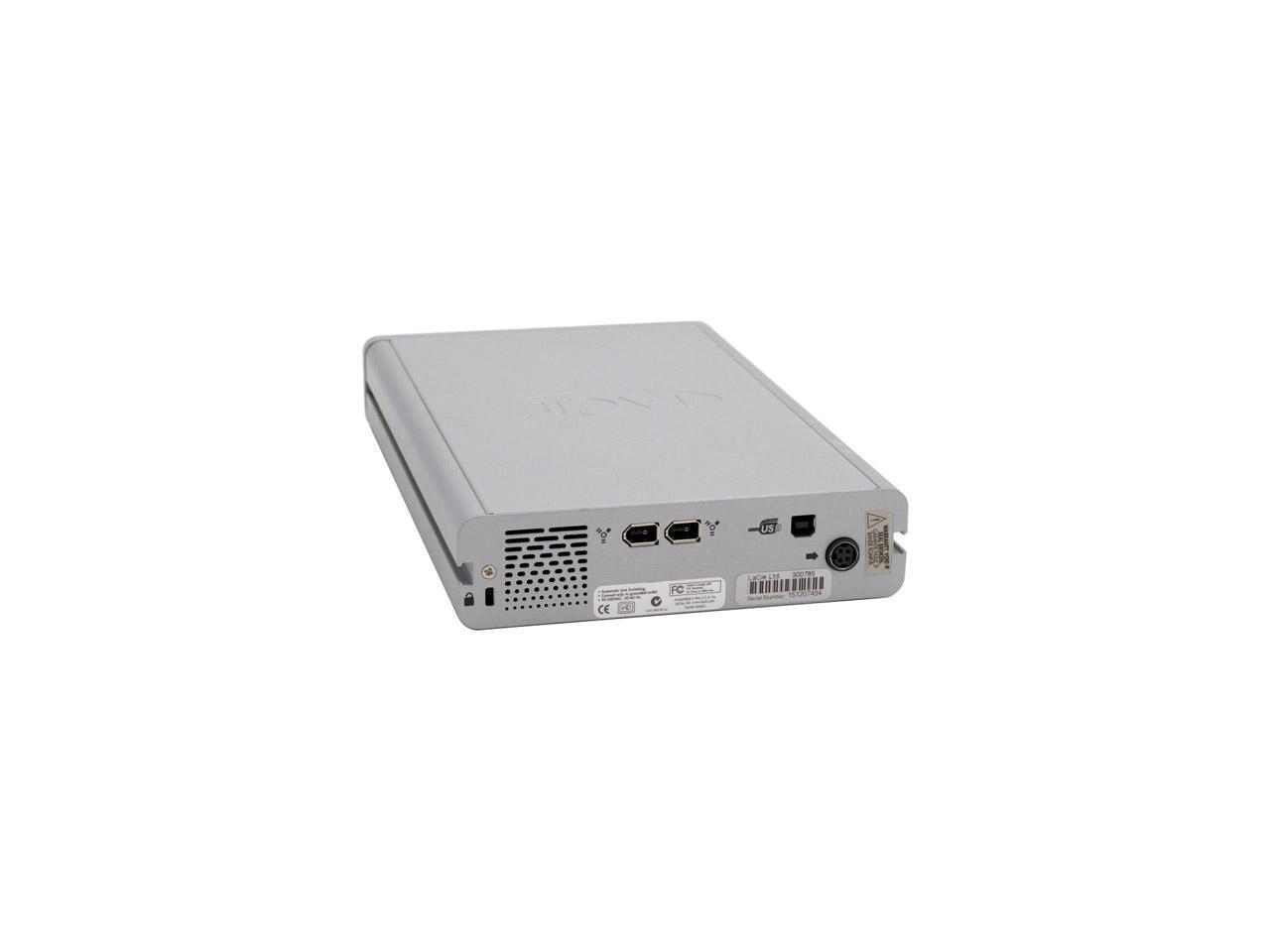

The LaCie Rugged Thunderbolt External Hard Drive (USB 3.0) works great with any Mac from the MacBook Pro (mid-2015) to the iMac with Retina 4K Display to the souped up Mac Pro (Late 2013). The LaCie Rugged Thunderbolt External Hard Drive (USB 3.0) is one of the early products to support Thunderbolt 2 and SuperSpeed USB technologies. Perhaps that's why they are a favorite, especially among Apple users. Of course we'll be sneering at its slow data rate and miserly storage capacity well before we get to the year 2010, but in the meantime it'll do nicely.LaCie (now part of Seagate) has always merged elegant design with the latest technology. It may not be as fast as a hard drive, but the sensible media costs (a write‑once DVD‑RAM cartridge is now under £20), combined with the large storage capacity makes it ideal for use with computer audio. The claimed data transfer rates were confirmed almost exactly when backing up audio files, so you can expect to back up or restore 60Mb of audio in under a minute.įrom the little time I've spent using this DVD drive, I'm already a convert. You also have to turn over the cartridge to access side two. I had no problems installing or using the drive, though users new to DVD need to keep in mind that the two sides of a double‑sided DVD‑RAM cartridge behave as two completely separate volumes, each of which needs to be formatted separately. Like most media, DVD‑RAM needs to be formatted, after which it behaves very much like CD‑R for reading, and like a conventional removable drive for file writing. Using DVDĬDs and DVDs are loaded directly into the media drawer, while DVD‑RAM media is built into a cartridge.
#LACIE DVD BURNER FOR MAC SOFTWARE#
Straightforward installation software comes on CD‑ROM - WriteDVD for PCs and DVD‑RAM TuneUp for Macs. A panel LED indicates error status: a single‑flash cycle denotes overheating, a dual‑flash cycle indicates dirt on the media or the lens, while a triple‑flash cycle shows that the drive has used up almost all of the spare sectors allocated to defect management. A small thumbwheel control adjusts the headphone volume and the cooling fan is reasonably quiet. Owners of the newer 'boiled‑sweet' G3 and G4 Macs need a SCSI card to use the drive, though they may be better off looking for a USB or Firewire alternative.Ī pair of rear‑panel phono sockets can provide a direct stereo audio output, and there's also a mini headphone jack on the front panel beneath the media drawer. Both SCSI ports are Centronics 50‑pin, and a 50‑ to 25‑pin cable suitable for most grey Macs is included. Playback of DVD video requires MPEG2 decoding hardware or software, which is not supplied. The drive can read all forms of conventional CD, CD‑ROM and DVD media, as well as reading and writing DVD‑RAM and PD (single‑sided 650Mb) media there's also a model B version of this drive that can't read PD cartridges. The SCSI address can be selected on the drive's rear panel, and there's a slide switch for SCSI termination.
#LACIE DVD BURNER FOR MAC PC#
The minimum PC requirement is a Pentium 133 (running Windows 95 or 98), while Mac users can use 68030 machines onwards, providing they have a SCSI interface that is SCSI Manager 4.3‑compliant, and are running MacOS System 7.5 or later. The drive I tested is an external SCSI model that can be used with Macs or PCs fitted with a suitable ASPI‑compatible SCSI card (Adaptec is recommended). A life expectancy of around 30 years is claimed for properly handled media, and the LaCie DVD AM52 drive under review can accommodate both Type I and Type II DVD media cartridges. As with CD‑R, both write‑once and rewritable media are available, but the rewritable version can be treated much like a conventional hard drive in terms of adding and removing files. The seek time can be up to 120mS for DVD‑RAM while the maximum sustained transfer rate is 1385Kb/sec. I say backing up, because the data transfer rate of DVD isn't really up to streaming multitrack audio directly to or from the media. Because it is the basis of both consumer and business data formats, the price of the hardware is under constant downwards pressure, and the storage capacity of 2.6Gb for a single‑sided DVD and 5.2Gb for a double‑sided disc makes it particularly well‑suited to backing up digital audio files. Today's fixed hard drives frequently exceed 10Gb, and removable 2Gb cartridge drives are commonplace, but for archiving, the inexpensive DVD (Digital Versatile Disc) is extremely attractive. Then along came space‑hungry graphics, digital video, samplers and hard disk audio, and suddenly the floppy disk started to look rather pathetic. When the 3.5‑inch, 1.44Mb floppy was introduced, it seemed inconceivable that we would ever need anything larger for file backup.

Just the thing for backing up those long audio files? Paul White introduces his old, grey Mac to new technology in the form of the LaCie DVD‑RAM drive.


 0 kommentar(er)
0 kommentar(er)
